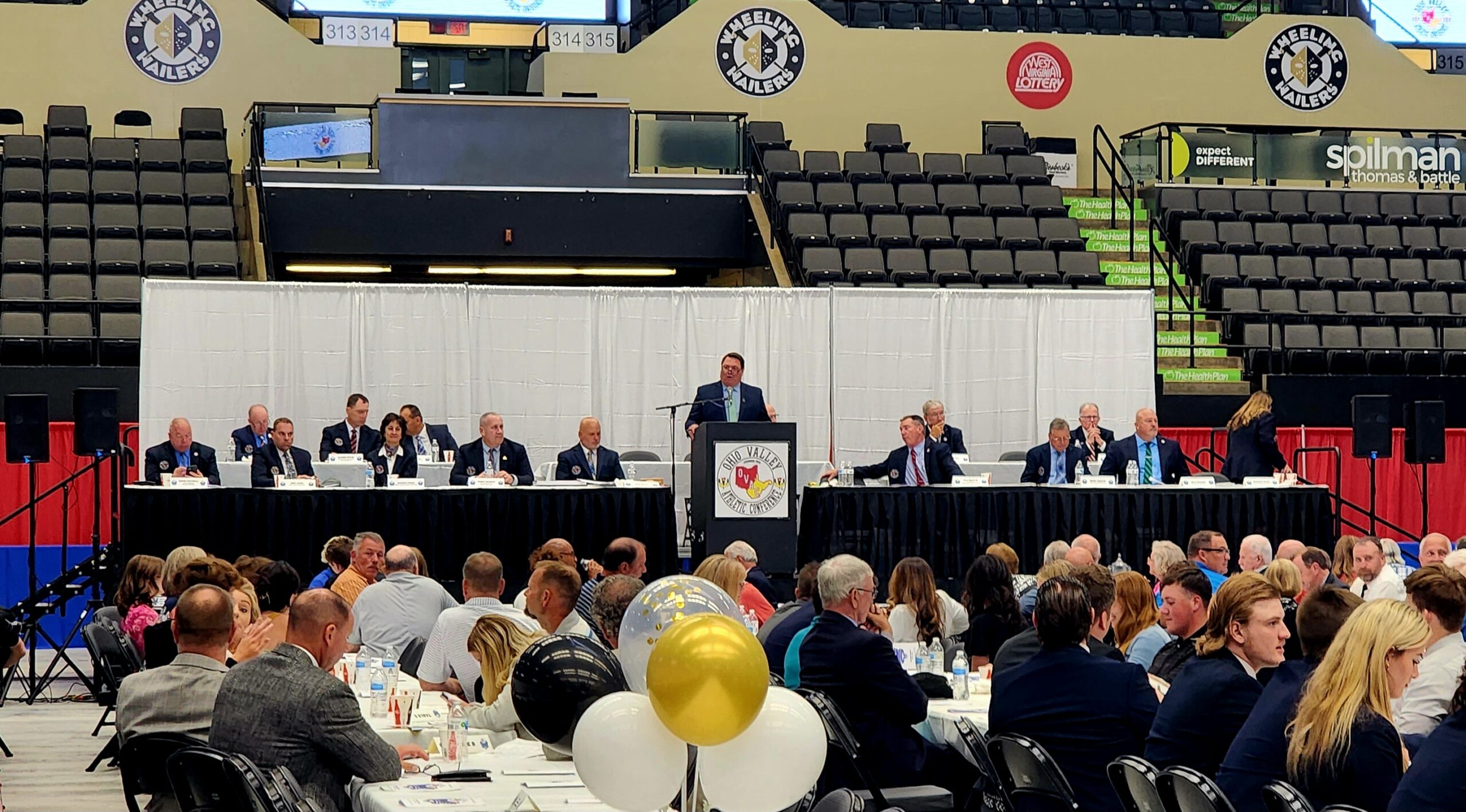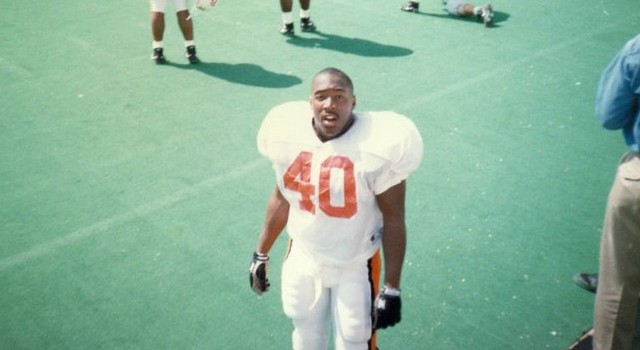By Gerry Dulac, Pittsburgh Post-Gazette
As a kid growing up in Appleton, Wis., about 25 miles from Green Bay, Rocky Bleier remembers the tailgate parties before a Packers game.
They began on a Friday night, usually at a neighbor’s house, and everyone dressed in the green-and-gold colors of the Packers and sat around talking about their favorite players, as if they knew them personally.
“They became part of their lives,” Bleier said of the Packers. “Your focus was only on one team. There were only three TV stations and there was only one game on TV, and it was a regional game and it was the Packers. That’s all you had. There were no other distractions. It captured your imagination, not just the locale, but the state, much like the way the Steelers Nation was created.”
Bleier was 13 when Vince Lombardi became the Packers coach in 1959 and 19 in ’65 when the Packers won the first of three consecutive National Football League championships — the second time in franchise history they had managed to win the league title three years in a row.
When he was a rookie with the Steelers in ’68, the Packers already had won the first two Super Bowls, beating the Kansas City Chiefs in ’66 and the Oakland Raiders in ’67.
“For me, the reality of the Packers was from the 1960s on, being in junior high, high school and college,” Bleier said. “They were the yard mark by which all football teams were judged. Lombardi became bigger than life and the players became bigger than life.”
Little did Bleier know he would go from intimately watching one of the greatest dynasties in NFL history to being an intricate part of another.
Passions, differences
The Packers have won more league championships (12) than any team in NFL history. Included in that total are three Super Bowl championships, the most recent in 1996.
But no NFL team has won as many Super Bowl titles as the Steelers (6), who will be trying for another a week from today in Arlington, Texas. That the opponent will be the Packers only adds to the intrigue. After the Packers established one dynasty in the 1960s, the Steelers forged another in the ’70s with maybe the greatest six-year period in league history — winning four Super Bowls in that span.
Make no mistake, it will be Titletown USA vs. the City of Champions. The team of the ’60s vs. the Team of the ’70s. Two of the most storied franchises in the league meeting on a field of the Dallas team that — historically speaking — has been disappointed by each. Cultures won’t mesh as much as they will collide.
“This is two old NFL teams playing — the Green Bay Packers and Pittsburgh Steelers,” said former Packers linebacker David Robinson, who played on three league championship teams from 1963-72. “Both teams come from working-class towns and both teams have a fan base that is tremendous. They should get the Pittsburgh fans vs. the Green Bay fans and let them go at each other on the 50-yard line. It’d be a helluva show.”
“Pittsburgh and here are similar — they’re the older, traditional franchises,” said Packers defensive coordinator Dom Capers, who coached for three years with the Steelers beginning with Bill Cowher’s first staff in 1992. “Green Bay was the team of the ’60s, the Steelers were the teams of the ’70s. You can feel that tradition.”
Capers is one of several coaches on the Packers staff who has experienced the richness and tradition of each franchise. Quarterbacks coach Tom Clements, a two-sport star at Canevin High School, held the same position with the Steelers from 2001-03. Secondary coach Darren Perry played for the Steelers from 1992-98 and was an assistant coach from 2003-06.
“When you walk into the Steelers’ facility, you see all the Super Bowl trophies, and the same thing is the case here in Green Bay,” Clements said. “You see the trophies, you see the pictures of players from the past. If you’re a football fan, you recognize the names right away. Both teams have great tradition. I feel very fortunate to be in both places.”
Green Bay has a population of 101,025, much smaller than Pittsburgh; but, because the Packers are the only NFL team in Wisconsin, the passion for the franchise extends beyond town borders and envelopes the entire state.
“Around here, you got to love it — there’s not a lot else other than the Packers,” Capers said. “You’re talking a city of 100,000 people. They got waiting list for tickets that has been handed down from generation to generation. The fans are unbelievable here, just like Pittsburgh.”
Still, it doesn’t compare to the maniacal fan base of the Steelers. Black-and-gold tentacles reach beyond the state, seemingly to every corner of the continent and beyond.
“As unique as Green Bay is and as rabid as the Packers fans are, there’s still no comparison,” said former Steelers tackle Tunch Ilkin, who played the final year of his 14-year career with the Packers. “I had a good experience in Green Bay; the people were very nice. But you don’t get the same feel of tradition that you do here.
“All I know is the first time I walked in the lobby of the Steelers offices in 1980 and saw those four Super Bowl trophies sitting there, and saw the big mural of the Steelers-Raiders game behind the front desk, I was blown away. I just went, ‘Wow.’ I never got that when I went to Green Bay.”
Ilkin never went to the Super Bowl during his playing days with the Steelers, but this will be his third appearance in six years as a color analyst for the team’s radio network. In that time, he has discovered the other major difference between the Steelers and Packers.
“There’s a lot of passion there, but it just doesn’t compare,” Ilkin said. “I think part of it is this — the Packers experience is just in Green Bay; the Steelers Nation is international. The Steelers experience is altogether something different. When the Steelers fans take a town, they take it. They’re like the Marines — once they take a beachhead they don’t give it up.”
Same as it ever was
Bleier has experienced the greatness of each franchise — as a Wisconsin native and resident in the ’60s to a member of the Steelers in the ’70s. His love affair with each city has never dissipated, and he understands the emotional bonds of the fans.
“One of the things people have to understand, and maybe they do, is that [Green Bay] is much like Pittsburgh,” Bleier said. “It’s a blue-collar paper town. They had their local communities, their ethnic communities, and you have a parallel mindset of people. They adopt that to their sporting teams, in this case, the Green Bay Packers.
“Then, to come to Pittsburgh, with the same mentality, the same kind of community, and to experience it again from a player perspective and understanding the importance a player has in the lives of their fans … they hang on everything you say and do. It had a deeper meaning than ever.
“Now, as the two teams have evolved over the last 31 years, after all the ups and downs, all of a sudden, it’s so similar and so alike again.”































Discussion about this post